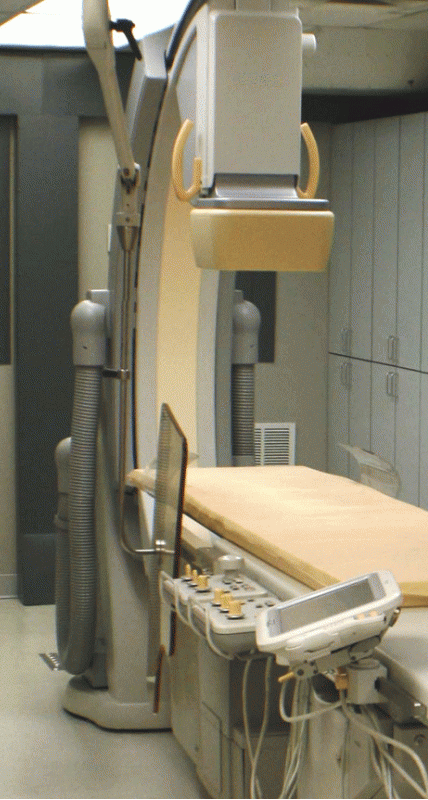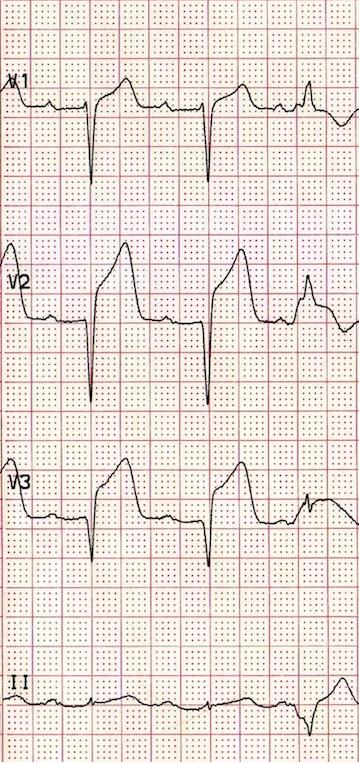Hemodynamics
Pulmonary Capillary Wedge Pressure
The SGC or similar catheter is advanced up to the Pulmonary artery with the balloon tip inflated until it actually occludes flow in a small branch. This pressure waveform is the Pulmonary Capillary Wedge Pressure (PCWP) and is produced from the same physiologic cardiac events of the Left Atrial pressure (LAP). With the balloon inflated and the catheter wedged into a small pulmonary artery, you are looking through the pulmonary vasculature at the Left Atrium. In simple words, the PCWP is comparative to the LAP.
The PCWP is best viewed at a 40 or 50 mm Hg scale (dependent on what you monitor allows) at a speed of 25 mm/sec.
Components of the PCWP
- The a wave is produced by left atrial systole and occurs after the P wave of the ECG.
- The a wave is followed by the x descent, reflecting left atrial relaxation.
- The c wave, not always seen, is produced by the closure of the mitral valve
- The v wave is produced by filling of the left atrium and occurs after the T wave of the ECG.
- The v wave is followed by the y descent, reflecting the opening of the mitral valve
Notice the delay between electrical activity and pressure events. This is related to distance between pressure transmitted retrogradely from left atrium through the pulmonary venous system to the catheter tip.
Always record the pressure at end expiration. Inspiration will create a decrease in intrathoracic pressure that will then lower the cardiac hemodynamic pressures.
The PCWP is recorded as: a/v/mean. Since the a wave and v wave are usually identical, the mean value is usually stated.
Mean pressure can be calculated as: [(2 * diastolic) + systolic] / 3.
Normal PCWP is 4 - 12 mm Hg.
Reasons for elevated PCWP
- LV failure
- Mitral Stenosis and/or Regurgitation
- Cardiac Tamponade
- Constrictive Pericarditis
- Volume overload
Complications when measuring PCWP
- Pulmonary artery infarction - related to prolonged inflation of the balloon tip.
- Overwedging - noted by a progressive rise in the pressure with a loss of a and V waves.
- Pulmonary artery rupture - rare but extremely serious complication.
- Arrythmias - related to right ventricular irritation from catheter.
References
- Daily, E.K. and Schroeder, J.S. (1990) Hemodynamic Waveforms - Exercises in Identification and Analysis (2nd ed.). Philadelphia, PA: Mosby.
- Kern, M. et al (2003) The Cardiac Catheterization Handbook (4th ed.). Philadelphia, Pa: Mosby.

